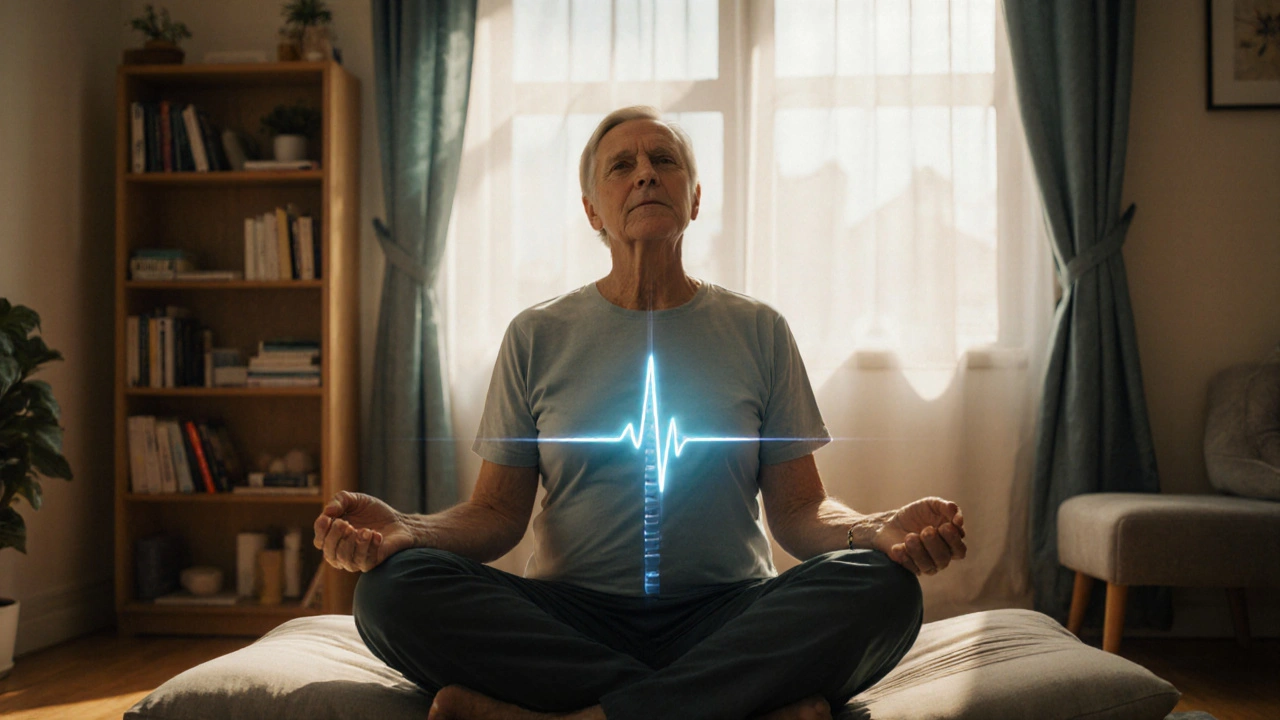Stress Reduction Meditation
When practicing stress reduction meditation, a set of focused breathing and visualization techniques that lower nervous system activation. Also known as relaxation meditation, it helps quiet the mind and reset the body's stress response. Stress reduction meditation works best when you understand the tools that support it.
One of the biggest allies is mindfulness, the practice of staying fully present without judgment. Mindfulness sharpens the ability to notice tension early, so you can apply meditation before stress spirals. In turn, mindfulness benefits from the calm that meditation creates, creating a feedback loop that improves focus and emotional balance.
How Other Techniques Amplify the Benefits
Biofeedback, a non‑invasive method that uses sensors to show real‑time physiological data gives you a concrete view of heart rate variability, breathing patterns, and muscle tension. By seeing these numbers, you can fine‑tune your meditation practice, making each session more effective. The relationship can be expressed as: biofeedback informs stress reduction meditation, and the calm achieved during meditation improves biofeedback scores.
Another surprising partner is gut health, the state of the digestive system and its microbial community. Research shows the gut–brain axis lets gut microbes influence cortisol levels and mood. When your gut is balanced, you experience fewer anxiety spikes, which means your meditation sessions start from a steadier baseline. In short, gut health supports stress reduction meditation, and regular meditation can help regulate the gut’s stress responses.
Finally, creative arts therapy, the use of art, music, and movement to process emotions offers a hands‑on way to release tension before you sit down to meditate. Painting, drumming, or dancing for a few minutes can lower physiological arousal, making it easier to slip into a meditative state. The semantic link is clear: creative arts therapy prepares the mind, which enhances the depth of stress reduction meditation.
Putting these pieces together creates a robust wellness system. Stress reduction meditation provides the core calming effect; mindfulness teaches you to stay present; biofeedback gives measurable feedback; gut health stabilizes internal chemistry; and creative arts therapy clears mental clutter. Together they form a network where each node strengthens the others.
If you’re wondering where to start, begin with a 5‑minute breathing session. Focus on the inhale‑exhale rhythm, notice any tension, and let it melt away. After a few days, add a short mindfulness check‑in—ask yourself what you’re feeling without labeling it. Then experiment with a simple biofeedback app to see your heart rate drop. A probiotic‑rich snack can support gut health, and a quick sketch or drum beat can prime your brain for deeper meditation.
The posts below dive into each of these areas. You’ll find quick breakfast ideas that fuel gut health, a guide to biofeedback for anxiety relief, and strategies to keep calm while you work. There’s also a look at how creative arts therapies boost emotional resilience, and tips on using mindfulness to stay focused. All of these resources link back to the central practice of stress reduction meditation.
Whether you’re a beginner looking for a clear starter plan or someone who already meditates and wants to level up, this collection gives you actionable steps. Expect practical advice, real‑world examples, and science‑backed explanations that you can apply today.
Ready to explore the full range of tools that make stress reduction meditation more effective? Scroll down to discover each article and start building a calmer, more balanced life.

Meditation: A Natural Solution to High Blood Pressure
Discover how meditation can naturally lower high blood pressure, the best techniques, a simple daily routine, and tips for lasting results.
Read More